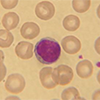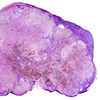Creatine Kinase (CK)
Specimen Volume
5 mL blood.Sample Preparation
Centrifuge
Turnaround Time
1 daySample Processing In Laboratory
Usual
Sample Stability
Activity is stable in samples storeed at 4 ºC for up to seven days or four weeks when stored at -20 ºC.
General Information
Creatine kinase (CK) is an enzyme that catalyzes the reversible phosphorylation of creatine by adenosine triphosphate (ATP). The CK enzyme is a dimer composed of subunits derived from either muscle (M) or brain (B). Three isoenzymes have been identified: striated muscle (MM), heart tissue (MB), and brain (BB). Normal serum CK is predominantly the CK-MM isoenzyme. Serum CK concentrations are reflective of muscle mass causing males to have higher concentrations than females. CK may be measured to evaluate myopathy and to monitor patients with rhabdomyolysis for acute kidney injury.
Patient Preparation
None
Notes
Creatine Kinase (CK, CPK) is an enzyme found primarily in the heart and skeletal muscles, and to a lesser extent in the brain. Significant injury to any of these structures will lead to a measurable increase in CK levels. Elevations in CK are found in:
-
Myocardial infarction
-
Crushing muscular trauma
-
Any cardiac or muscle disease
-
Brain injury
-
Hypothyroidism
-
Hypokalemia
-
Malignant hyperthermia
-
Drugs (statins, fibrates, antiretrovirals etc)
-
Macro CK
CK can be raised following injury to the myocardium and can be detected 4h after an infarction. Hs troponin I and ECGs are now used routinely to diagnose MI or acute coronary syndrome. Muscle trauma causes CK elevations within 12 hours of onset, peaking within 1 to 3 days, and declining 3 to 5 days after cessation of muscle injury. If there is on-going injury, the CK will remain elevated indefinitely. Serum CK activities exceeding 200 times the upper reference limit may be found in acute rhabdomyolysis, putting the patient at great risk for developing acute renal failure.
Reference Range
Females 29 - 168 U/L
Males 30 - 200 U/L
CK levels are higher in males than in females, and in black race populations. Exercise, muscle trauma (contact sports, traffic accidents, intramuscular injections, surgery, convulsions, wasp or bee stings, and burns), and drugs such as cholesterol-lowering statins can damage muscle and increase serum CK concentrations.
Source of Reference Range
Abbott DiagnosticsSpecifications
-
EQA Status:
NEQAS
- EQAS Scheme: Yes








